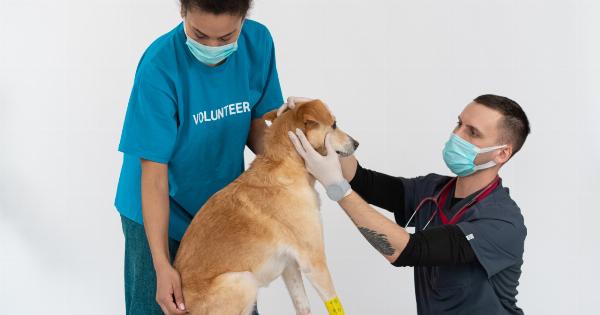Mastering Allergies: A Comprehensive Guide.
Understanding Allergies
Allergies, or allergic diseases, are a common health condition that affects millions of people worldwide. They occur when the immune system overreacts to normally harmless substances, known as allergens, and releases chemicals such as histamine.
This immune response can lead to a wide range of symptoms, from mild to severe. In this comprehensive guide, we will explore the different types of allergies, their causes, and strategies for managing and preventing allergic reactions.
Types of Allergens
Allergens can be found in various forms and substances. Some common types of allergens include:.
- Pollen: Pollen from trees, grass, and weeds can trigger seasonal allergies, often referred to as hay fever or allergic rhinitis.
- Dust mites: These microscopic creatures live in house dust and can cause year-round allergies.
- Pet dander: Proteins present in the skin flakes, urine, and saliva of pets can lead to allergic reactions in susceptible individuals.
- Mold: Mold spores thrive in damp environments and can trigger allergic symptoms when inhaled or touched.
- Food: Common food allergens include peanuts, tree nuts, shellfish, dairy, eggs, and wheat.
- Insect stings: Allergy to insect venom, such as that from bees, wasps, or fire ants, can cause severe allergic reactions.
Symptoms of Allergic Reactions
Allergic reactions can manifest in a variety of ways, depending on the allergen and individual sensitivity. The most common symptoms include:.
- Sneezing: A sudden, involuntary expulsion of air through the nose and mouth, often accompanied by itching and a runny or stuffy nose.
- Coughing and wheezing: Allergies can trigger respiratory symptoms, such as coughing and wheezing, resembling asthma.
- Itchy, watery eyes: Allergic conjunctivitis can cause red, itchy, and watery eyes.
- Skin rashes: Allergies can lead to hives, eczema, or general skin irritation.
- Digestive issues: In some cases, allergens ingested through food can cause nausea, vomiting, abdominal pain, and diarrhea.
- Anaphylaxis: A severe and potentially life-threatening allergic reaction characterized by difficulty breathing, swelling of the face and throat, rapid pulse, and a drop in blood pressure. Immediate medical attention is required in such cases.
Diagnosing Allergies
If you suspect you have allergies, it’s important to consult with a healthcare professional for an accurate diagnosis. The following methods are commonly used:.
- Medical history: Your doctor will ask about your symptoms, their duration, and potential triggers.
- Skin prick test: Small amounts of allergens are applied to the skin, and any resulting reactions indicate an allergic response.
- Blood test: A blood sample is taken to measure the level of specific antibodies, such as immunoglobulin E (IgE), which are produced in response to allergens.
- Elimination diet: If a food allergy is suspected, you may be advised to eliminate certain foods from your diet and reintroduce them gradually to identify the trigger.
Managing Allergies
While allergies cannot be cured, the symptoms and frequency of allergic reactions can be managed effectively through various strategies:.
- 1. Medications: Over-the-counter antihistamines, nasal sprays, and decongestants can provide temporary relief from allergy symptoms. In some cases, prescription medications, such as corticosteroids or epinephrine auto-injectors, may be necessary.
- 2. Allergen avoidance: Identifying and avoiding triggers is crucial in managing allergies. This may involve minimizing exposure to pollen, dust mites, pet dander, or mold, as well as reading food labels carefully to avoid allergenic ingredients.
- 3. Allergy shots: Immunotherapy, commonly known as allergy shots, involves regular injections of small amounts of allergens to desensitize the immune system over time. This can be an effective long-term treatment for certain allergies.
- 4. Nasal irrigation: Rinsing the nasal passages with saline solution can help alleviate nasal congestion and remove allergens.
- 5. Air purifiers: Using air purifiers with HEPA filters can help reduce indoor allergens, such as dust and pet dander, and improve overall air quality.
Preventing Allergic Reactions
While managing allergies is important, preventing allergic reactions from occurring in the first place is ideal. Here are some preventive measures:.
- 1. Keep a clean home: Regularly clean and vacuum your home to minimize dust and allergens. Use allergen-proof covers for mattresses and pillows.
- 2. Maintain a healthy diet: A nutritious diet can strengthen your immune system and potentially reduce allergy symptoms. Include fruits, vegetables, and foods rich in omega-3 fatty acids.
- 3. Stay informed about pollen levels: Monitor local pollen forecasts to avoid spending extended periods outdoors when pollen counts are high.
- 4. Use protective clothing: When gardening or engaging in outdoor activities, wear long sleeves, pants, a hat, and sunglasses to minimize contact with allergens.
- 5. Be cautious with pets: If you have known pet allergies, consider avoiding direct contact with animals, or at least wash your hands thoroughly after touching them.
Conclusion
Mastering allergies requires a combination of understanding, management strategies, and preventive measures.
By identifying triggers, seeking professional diagnosis, and implementing appropriate treatment options, individuals can effectively manage their allergies and improve their overall quality of life. Remember, if you suspect a severe allergic reaction or experience symptoms of anaphylaxis, seek immediate medical attention.






























